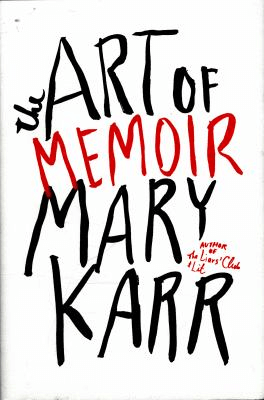When I heard about The Art of Memoir, by noted memoirist Mary Karr, I knew immediately I needed to add it to my reading list. I’m not a writer myself and I haven’t (yet) read Karr’s other works, but I am an avid memoir reader, so the thought of learning about the process behind some of the most celebrated works in the genre really appealed to me. I’m so glad I picked it up, because The Art of Memoir hit majorly on another subject I’ve been increasingly interested in: vulnerability and capacity for connection.

My fascination with vulnerability stems from lots of chats I’ve had with pals about the subject, and was only heightened when I read Daring Greatly by Brené Brown. That book is complex and wonderful, but if I had to boil down Brown’s main thesis, I’d say it is the idea that vulnerability isn’t weakness; it’s the ability to put yourself out there and accept the risk of rejection or misunderstanding because that’s the only way people can create meaningful connections.
Karr references this concept both directly and indirectly when she discusses the sometimes grueling creative process that she and other memorists have put themselves through. “Every time I picked up a pen, this grinding, unnamed fear overcame me—later identified as fear that my real self would spill out,” she writes. Throughout The Art of Memoir, Karr obsessively documents the methods she and other writers have used to overcome this fear, and the reasons why all that hard work and mental anguish was worth it. Namely, that being as authentic as possible is the key ingredient for a successful memoir.
Writing this book, in and of itself, was a vulnerable act. Karr writes at length about how important revision is to her process. She doesn’t pretend to be visited by a muse who inspires perfectly-formed works. She acknowledges that the process of writing is often frustrating and difficult, and that the resulting texts, no matter how long authors have pored over them, may be riddled with flaws and imperfections. But she’s also quick to point out that those imperfections are part of what makes memoir a genre grounded in the human, a genre that often inspires readers to feel connected to an author’s feelings and experiences. (A lot of these same ideas are echoed in Elizabeth Gilbert‘s recent Big Magic: Creative Living Beyond Fear, which is a birds-eye view of the value of creativity and accepting imperfect finished product because the process is often the most important part of the work).
If you know of any other books that hit upon these themes, I’d love to hear about them in the comments.
Happy reading,
-Ginny
See what makes memoir a special genre
Add a memoir to your Summer Reading listGinny is a baker of treats, reader of fiction and Coordinator of Volunteer Services based out of the Office of Programs and Partnerships at CLP – East Liberty. She wants to pet your dog.
